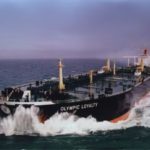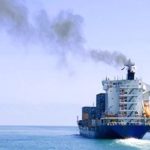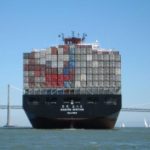The technical challenges of mega box ship casualties

The increasing size of mega box ships presents a number of important technical challenges in a casualty situation that must be properly considered when assessing and dealing with the ship, in order to minimise loss and damage.
Condition of ship
In any casualty situation, it is vital in the early stages to understand the ship’s condition. Information such as the ship’s draft, list angle, trim, condition of tanks and cargo, and type of seabed (if aground) are key. This information can be provided by the ship’s crew and will be used by the first responders, ie salvors, naval architects and consultants working with the ship’s P&I club.
An initial assessment will be made of the immediate risk to the crew, any potential environmental impact, the ship’s structural integrity and residual strength, as well as stability issues and potential cargo loss or damage. If the ship is aground, an estimate of ground reaction forces will be made, together with the required pulling force to free the ship, enabling an appraisal of the number and type of assets required to assist the ship as well as providing an early indication of the potential costs.
During these early stages, when making an initial assessment of the casualty, it is common to use the available data from an existing, similar-sized ship to give an indication of the likely condition of the casualty.
Given the recent emergence of ships of this size and the relatively few incidents experienced to date, such information may not be at the naval architect’s disposal. Therefore, information contained in the ship’s drawings and documentation (such as the pre-incident loading condition, general arrangement drawings, tank capacity plans, stability booklets/loading manuals, cargo manifest, etc) will be invaluable in the early stages, as it will enable an accurate assessment of the ship’s condition and expedite the production of a detailed plan to deal with the casualty. It will also assist in understanding how the ship’s compartments are flooding or may flood due to cross flooding or progressive flooding through openings.
Having this information to hand at an early stage can allow plans to be made rapidly to prevent this occurring and to minimise the danger to the ship.
It will also help the naval architect to understand the implications of different solutions; for example, using firefighting water to extinguish or cool a fire on board may have adverse consequences on the ship’s strength, stability and floating drafts. If the ship is both aground and on fire, the additional weight from firefighting water will impact the ground reaction and residual strength of the ship, thereby complicating the salvage operation.
Lightering operations
A grounded ship of around 20,000 TEU container capacity presents significant challenges if lightering is required to refloat it. In recent grounding cases, such as the CSCL Indian Ocean and CSCL Jupiter on the River Scheldt, it was fortunate that no cargo lightering operations were required, and the ships were refloated using the pulling force of tugs alone. However, if containers need to be removed before the ship can be refloated, this presents a huge challenge due to the difficulty in bringing suitable cranes alongside the grounded ship. With such large ships, the necessary height and reach of cranes is prodigious, as is the size and draft of the ships needed to support them. A large deck and terminal space will also be required to remove, process and temporarily store a significant number of containers. Furthermore, if the ship has a significant angle of list or trim, the problem of removing the containers from the ship becomes even more challenging.
For cargo lightering operations during a casualty, it is essential to have an accurate container stowage plan detailing the weights and contents of the containers to be removed, whether they contain any dangerous goods and whether they require electrical power for reefer units. This information will assist in assessing the potential environmental impact if containers are lost overboard, either during the casualty or in subsequent efforts to assist the ship.
The cargo manifest and BAPLIE file (which shows where containers are stowed on a ship) are essential information.
Towing to a port of refuge
In many casualties, it is likely that the ship will require assistance by tugs either to refloat it or to tow it to a port of refuge, and therefore a calculation of the towage requirements will be made. Very large container ships will have a very high windage area and will therefore experience significant wind resistance in addition to the resistance of the hull through the water. Again, a detailed container stowage plan is required to enable such a calculation to be accurately made. Depending on the location of the casualty, there may not be sufficient tug capability available to safely tow the ship, which may result in the ship being put at further risk (for example, grounding/regrounding). A quick response is therefore essential.
Once the casualty has been brought under control and the ship can be taken to a port of refuge, it will be necessary to consider the repairs to be made. Therefore, a suitable repair yard with sufficient berthing/dry-docking facilities large enough to accommodate ships of this size must be found. If the repairs required are significant, it may be necessary to offload any sound cargo on board and trans-ship it by alternative ships to destination. The casualty may then be towed to a suitable location for repairs, which may be thousands of miles away. This must be factored into any potential repair cost estimates and could contribute a significant amount to the repair and cargo costs.
Conclusion
Following a casualty, as much information as possible should be provided to enable a comprehensive assessment of the ship’s condition and to assist in formulating a suitable response plan. However, the ever-increasing size of mega box ships has made it more complex and challenging during the initial response phase, especially when cargo lightering operations need to be carried out to refloat the ship or tow it to a port of refuge.
A quick response with accurate data and information is therefore critical to the success of minimising any loss in a casualty.
Source: Standard Club

 Hellenic Shipping News Worldwide Hellenic Shipping News Worldwide, Online Daily Newspaper on Hellenic and International Shipping
Hellenic Shipping News Worldwide Hellenic Shipping News Worldwide, Online Daily Newspaper on Hellenic and International Shipping






















 PG-Software
PG-Software